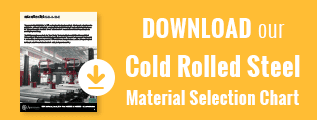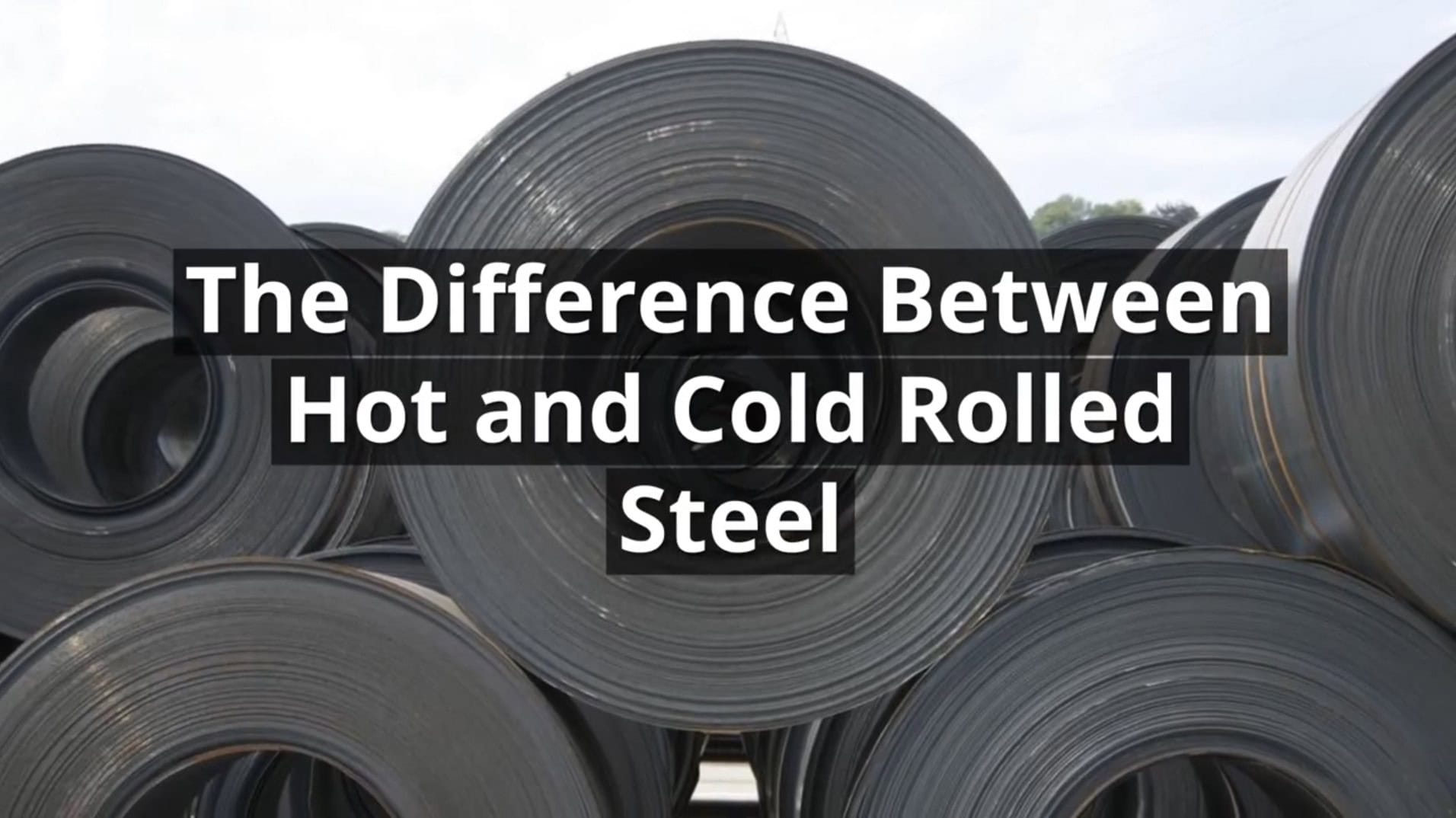To meet unique application needs, there are many types of steel available in various shapes, sizes, and finishes. Fully understanding the unique properties and benefits of each type can allow for significant time and cost savings while helping to ensure optimal quality and performance of the end product.
Cold-rolled steel and hot-rolled steel, in particular, offer different features and benefits that are best-suited to certain applications and industries. The main difference between cold-rolled steel and hot-rolled steel is the manufacturing process involved in forming each of them.
Manufacturing Process
Hot Rolled Steel
The hot-rolled steel process occurs at temperatures over 1,000 °F, which is above the recrystallization temperature for most types of steel. The steel reconfigures itself during cooling, giving it a looser tolerance than the original material. This forming process makes products easier to work with, as the malleability of hot-rolled steel allows it to be formed into many shapes.
Cold Rolled Steel
Cold-rolled steel is essentially hot-rolled steel that has undergone further processing. When hot-rolled steel cools, it is rerolled at room temperature. Strain hardening by as much as 20% increases the strength of the final product and ensures a smooth finish. The cold roll process creates steel that is stronger and harder than hot-rolled steel, and allows for more exact dimensions. For instance, bars are truly square, with more precise edges and corners. Tubes also have better straightness and exhibit superior concentricity and uniformity properties.
Characteristics
Hot rolling and cold rolling processes change the physical characteristics of the metal. Use this quick guide to compare their properties.
Hardness and Strength
Cold-rolled steel is harder and stronger than hot-rolled steel because the lower temperature process hardens the metal and refines its microstructure to be more consistent.
Surface Finish and Appearance
Hot-rolled steel can have a rougher texture and mill scale, an oxide coating that darkens the surface. Cold-rolled steel is smoother and more uniform, which makes it easier to coat or paint.
Dimensional Accuracy and Tolerances
Cold-rolling steel results in more dimensional accuracy and precision, so cold-rolled metal goods tend to fall within stricter tolerances. Hot-rolled steel workpieces will have more variance in size, shape, and dimensions, so they are more cost-effective.
Corrosion Resistance
Both cold-rolled steel and hot-rolled steel can resist corrosion. However, hot-rolled steel may be more susceptible to corrosion because of its rougher surface, and the mill scale can redden over time.
Durability
Both types of steel are durable materials when properly selected and used. However, hot-rolled steel may have internal stresses that develop into voids and cracks. Cold-rolled steel has a more consistent grain and internal structure, making it generally more durable.
Weight
Both hot-rolled steel and cold-rolled steel share a virtually identical density. But because of its internal weaknesses, hot-rolled steel is weaker per unit of weight, and structural components will need to be bigger than comparable cold-rolled steel components.
Machinability
The internal cracks and inconsistent structure of hot-rolled steel make machining difficult, as the small imperfections can create inconsistent final products. Cold-rolled steel has a more consistent internal structure that is ideal for machining.
Weldability
Generally, hot-rolled steel responds better to welding because it has better flow and less carbon. But the imperfections in the metal can distort the weld. While cold-rolled steel lacks the same imperfections, the higher concentration of carbon and harder surface can make welding more difficult.
Choosing Between Hot Rolled vs. Cold Rolled Steel
Knowing the differences between hot-rolled and cold-rolled steel makes it easier to strategically choose the right metal for your project. By picking the right material, you can get better overall performance and value for your budget.
Key Considerations When Choosing HR vs. CR Steel
Weigh these factors when choosing which steel is right for your next project:
- Application requirements. Different applications will require various levels of strength, precision, and tolerances. Also consider how easy or difficult the metal will be to machine or weld.
- Cost considerations. Hot-rolled steel is more affordable than cold-rolled steel.
- Material properties. Cold-rolled steel is hard and strong, while hot-rolled steel is easier to shape.
- Aesthetic preferences. For visible assemblies, cold-rolled steel offers better surface quality and appearance.
- Lead time and availability. The lead time and availability vary depending on the grades of hot-rolled or cold-rolled steel that you need.
Cold-rolled steel works best in applications that require harder materials, exact dimensions, and/or a beautiful surface finish. Common applications include electronics, consumer goods, automotive components, and furniture. Hot-rolled steel is more affordable and works best in applications where tight tolerances and precision are not priorities, such as construction and infrastructure projects.
Get in Touch With the Metal Forming Experts at American Industrial
Understanding the unique features and benefits offered by cold-rolled steel and hot-rolled steel is hugely helpful in determining which process and material will work best for your specific needs.
With more than 35 years of experience in precision metal stamping and assemblies, American Industrial Co. is proud to offer precision metal stamping services for a wide range of industries and applications. To learn more about hot and cold steel rolling and discuss how we can help with your unique application, reach out to the team today. Request a quote for pricing details.




